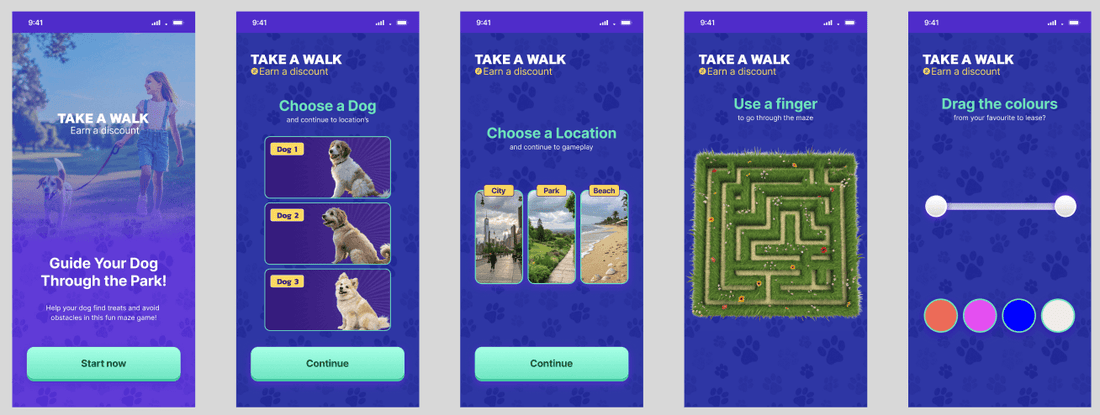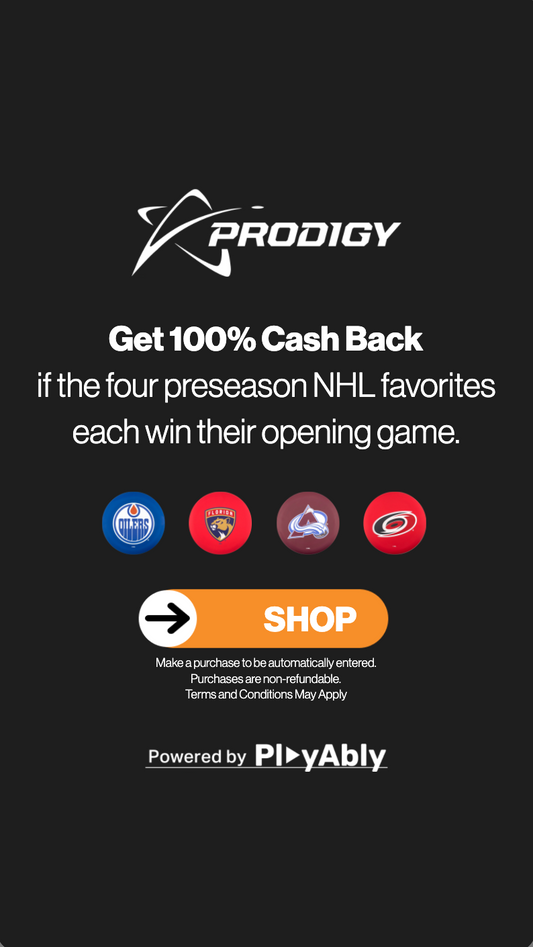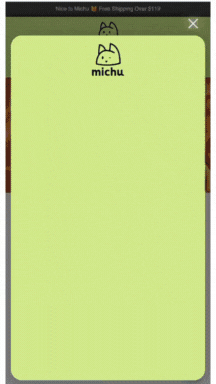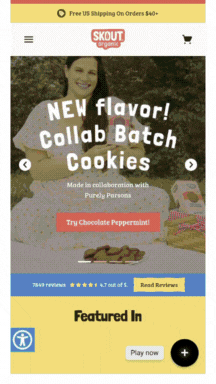Building Compelling Gamified Lead Generation Tools
Vintage Cars Customizable Game
Creating Customer Journeys Experiences in eCommerce with Gamification
Download The Guide
In the digital marketing world, lead generation is crucial for growing a customer base and building lasting relationships. Gamification brings a fresh approach to this process, turning simple interactions into engaging, enjoyable experiences that capture user interest and motivate them to take action. This guide explores gamified lead generation tools—such as quizzes, spin-to-win games, and interactive sign-up forms—and how they can boost engagement and conversion rates.
The Power of Gamified Lead Generation
Traditional lead generation methods, like pop-ups and sign-up forms, can sometimes feel intrusive. Gamification, however, makes the process fun and interactive. Studies show that gamified experiences increase lead conversion rates by up to 30%, as users are more likely to engage with content that entertains or rewards them. By using gamified tools, brands can make lead generation feel like a natural, enjoyable part of the browsing experience.
Vintage Cars Customizable Game
Gamification and conversion optimization go hand in hand. While gamification keeps users engaged, conversion optimization ensures that engagement leads to action—whether that’s making a purchase.
Download The GuideEffective Gamified Lead Generation Tools
1. Interactive Quizzes for Personalized Lead Capture
Quizzes are a powerful way to capture leads while providing value to the user. A well-designed quiz can help customers discover products that fit their preferences or offer insights into their tastes. For example, a skincare brand might create a “Find Your Perfect Product” quiz, where users receive personalized recommendations based on their responses. At the end of the quiz, customers are prompted to enter their email to receive their results, completing the lead capture process.
To optimize quiz-based lead capture:
- Keep quizzes short and relevant to maintain engagement.
- Ask for an email at the end of the quiz, once users are invested in seeing their personalized results.
- Use quiz data to segment leads for more targeted follow-up marketing.
2. Spin-to-Win Games: Adding a Touch of Excitement
Spin-to-win games add an element of fun and unpredictability to lead generation. In this setup, customers are invited to “spin” a virtual wheel to win a prize, like a discount code or free shipping. In exchange for spinning the wheel, users are required to enter their email, capturing the lead while creating an engaging experience.
Spin-to-win games work particularly well because they tap into the excitement of potential rewards. Studies show that gamified pop-ups like spin-to-win wheels can increase email sign-ups by up to 40%, as users feel drawn to the chance of winning something exclusive.
Best practices for spin-to-win games:
- Limit spins to new visitors or set rules for fairness, encouraging customers to return for more chances.
- Offer rewards that are valuable enough to entice users but practical for your business model.
- Ensure the game is mobile-friendly and loads quickly to prevent abandonment.
3. Interactive Sign-Up Forms with Progress Tracking
Progress-tracking sign-up forms keep users engaged by showing how close they are to completing the form. Instead of asking for all information upfront, break down the sign-up process into steps and show progress as users fill in each field. For example, a progress bar could indicate that a user is 50% done, motivating them to complete the rest of the form.
Progress tracking taps into the Zeigarnik Effect, which suggests that people are more likely to complete a task once they’ve started. Using interactive, step-by-step forms can increase form completion rates and encourage more users to complete the sign-up process.
Tips for interactive sign-up forms:
- Keep each step short, asking only essential questions.
- Use a progress bar or similar visual to indicate completion.
- Include incentives like discounts or free resources for completing the sign-up.
4. Rewards-Based Surveys and Feedback Forms
Surveys and feedback forms can be turned into lead generation tools by gamifying them with rewards. For example, a brand could offer a small discount or bonus points for completing a survey, making it a mutually beneficial experience. These forms capture user data while also providing valuable insights into customer preferences and satisfaction.
In addition to gathering leads, surveys help brands understand customer pain points, preferences, and behaviors. Offering an incentive for completion increases the likelihood of participation, making it an effective tool for engagement and data collection.
5. Referral Programs with Gamified Incentives
Referral programs encourage existing customers to introduce new leads to the brand, expanding the customer base organically. By adding gamified elements—such as points for each successful referral, badges, or leaderboards—brands can create a sense of competition and motivation for customers to share with friends and family.
Referral programs are particularly effective for generating high-quality leads, as referred customers often have higher retention rates. Gamifying these programs encourages customers to refer more friends, as they are rewarded and recognized for their efforts.
Best practices for gamified referral programs:
- Offer meaningful rewards, such as discounts or exclusive access, for each referral.
- Recognize top referrers with a leaderboard or badges to encourage competition.
- Use email reminders and notifications to keep customers engaged with the program.
6. Reward Tracking: Keeping Customers Coming Back for More
Reward tracking is a powerful gamification strategy that encourages repeat engagement by rewarding customers for consistent interactions. This method leverages streaks or milestones to create a sense of achievement and drive ongoing participation. For example, customers might earn points, discounts, or exclusive offers by logging in daily or weekly, completing actions like exploring products, or playing interactive games.
Reward tracking works particularly well because it taps into two key psychological principles:
- The Endowed Progress Effect: Once customers start a streak or earn their first reward, they feel invested and motivated to continue.
- Loss Aversion: Customers are more likely to return to maintain a streak and avoid "losing" their progress or potential rewards.
Best Practices for Reward Tracking
- Set Clear Expectations: Clearly outline how customers can earn rewards and what they’ll gain by maintaining a streak.
- Escalating Rewards: Offer increasingly valuable incentives as streaks or milestones are achieved. For example, a small discount for three days of activity, a free product after a week, or exclusive access after a month.
- Visual Progress Tracking: Use a visible streak counter or reward tracker on your website or app to remind users of their progress and motivate them to continue.
- Tie Rewards to Meaningful Actions: Focus on actions that align with your marketing goals, such as visiting product pages, signing up for emails, or sharing content.
Implementing Gamified Lead Generation: Best Practices
To maximize the effectiveness of gamified lead generation tools, consider the following best practices:
- Align with Brand Identity: Ensure that gamified elements match the brand tone and values, creating a seamless experience for customers.
- Use Clear Calls-to-Action: Guide users to the next step clearly, whether it’s providing an email, completing a quiz, or referring a friend.
- Provide Real Value: Rewards should feel meaningful, increasing the likelihood that customers will engage with the gamified tool.
- Test and Optimize: Regularly test gamified lead generation tools for functionality, user engagement, and performance, making adjustments as needed.
Measuring the Success of Gamified Lead Generation
To evaluate the effectiveness of gamified lead generation strategies, track these key metrics:
- Conversion Rate: The percentage of users who complete the lead capture process, such as signing up or submitting a referral.
- Engagement Rate: The frequency with which users interact with gamified lead generation tools, indicating their effectiveness in capturing attention.
- Lead Quality: Assess the quality of leads generated through gamification, monitoring metrics like engagement or average order value.
- Bounce Rate: Monitor how often users leave the page without completing the lead capture, making improvements to reduce this rate.
Engaging Customers and Growing Leads Through Gamification
Gamified lead generation tools turn what can be a routine process into an enjoyable experience that encourages engagement and interaction. By offering value through interactive quizzes, spin-to-win games, and personalized rewards, brands can capture leads more effectively while building a connection with potential customers.
In a competitive eCommerce environment, gamification provides a way to stand out, creating memorable interactions that not only capture leads but also lay the foundation for long-term relationships. Through careful implementation and optimization, gamified lead generation tools can help brands grow their customer base and create loyal, engaged audiences.



